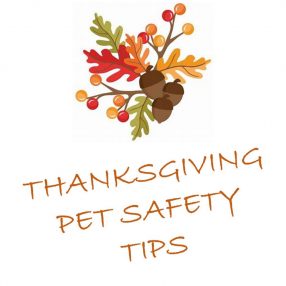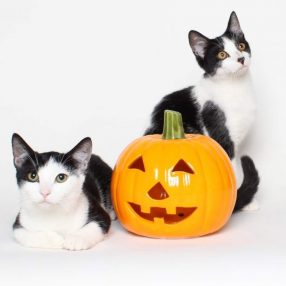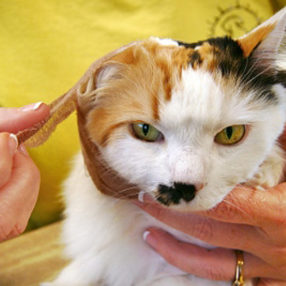
Life is Like a Box of Chocolates…Unless You Are a Dog, Cat or Ferret!
The pathetic begging began and “the look” melted Milly’s heart as she savored her Valentine Chocolates with her Sheltie Duchess looking on. For this loving pet mom, resisting those big brown puppy dog eyes and telling her furry angel, “No,” grew increasingly more difficult as Duchess whimpered and whined, licking her tiny lips and cocking her head in the cutest way possible. Wanting what was best for her pooch, Milly created a diversion by putting away the chocolates, and then taking Duchess for a car ride (safely strapped in her doggie seat belt) to the local pet bakery for some dog-friendly treats. Not only did Milly know that once a dog tastes chocolate, she will want more (well, who doesnt?!), but Milly was also aware that the sweet treat loved by humans everywhere can be deadly to our pets.
A study published in the Journal of Agricultural and Food Chemistry determined that chocolate is the third highest antioxidant source consumed in the U.S. following coffee and tea. According to Mark Stibich, PhD, “Chocolate is made from plants, which means it contains many of the health benefits of dark vegetables. These benefits are from flavonoids, which act as antioxidants which protect the body from aging caused by free radicals, which can cause damage that leads to heart disease. Dark chocolate contains a large number of antioxidants (nearly 8 times the number found in strawberries), and flavonoids help relax blood pressure and keep cholesterol from gathering in blood vessels.”
Sounds good so far, but the benefits do not apply to the canine species! According to the ASPCA, its Animal Poison Control Center hotline receives an increased volume of calls around Halloween, Christmas, Valentines Day, Easter and Mothers Day all holidays where candy is abundant from worried pet parents. The problem isn’t just the fat chocolate contains, but even worse is the caffeine-like substance known as Theobromine a naturally occurring stimulant found in the cocoa bean. An animal that has ingested too much chocolate can experience rapid heart rate, vomiting, diarrhea, seizures and death. The only good news is that it takes a fairly large amount of Theobromine to cause a toxic reaction in your pet. However, do realize that every dog is different and some are much more sensitive to toxins than others meaning they can suffer ill effects on even the smallest amount of a substance.
So how much is too much chocolate for your pet? The darker the chocolate, the more dangerous for your pooch! White Chocolate causes the least harm since it contains almost no cocoa and only 1mg of Theobromine per ounce. Milk Chocolate, the most common form, contains 60mg per ounce which means: one ounce of milk chocolate per pound of your dogs body weight can be toxic! For example: 1/2 pound for an 8 lbs dog or 4 pounds consumed by a 65 lbs dog would make him very ill or worse. The chocolate generally found in chocolate chip cookies, Semi-Sweet Chocolate, contains an even higher Theobromine concentration, so less than one ounce per pound your pet weighs can make him just as sick. Theobromine is found in still higher levels in Dark Chocolate, Cocoa Powder and Bakers Chocolate as well as Cocoa Mulch which often adorns potted plants and flower beds.
Once swallowed, there is no specific antidote for chocolate poisoning, so if you suspect your dog has consumed chocolate, induce vomiting at once by administering one Tablespoon of 3% Hydrogen Peroxide for every 15 lbs your pet weighs. Dribble it onto the back of his tongue with an eye dropper, needle-less syringe or even a turkey baster until he swallows. As an alternative, activated charcoal may help absorb the toxins in your pets stomach and buy you time to get to the Animal Emergency Center before the poison travels through your pets bloodstream. Once at the Animal ER, the Veterinarian will flush your pet’s system, give intravenous medications to protect his heart and treat whatever symptoms occur. So like Forrest Gump always said, “Life is like a box of chocolates. You never know what you’re going to get.” And for your dog or cat…it will never be a good thing, so NO CHOCOLATE FOR FIDO or FLUFFY! Also, since you never know what unexpected events will be thrown your way, be prepared by having a well-stocked PET FIRST-AID KIT along with the knowledge of what to do to help your pet in any kind of emergency.
Additionally…
Make sure Pet Valentine’s are dog and/or cat safe! Carob is a safe choice instead of chocolate!
Take Time to Smell the Flowers, but…
With their keen sense of smell, animals notice the scent of flowers too…and even consume them, but some varieties can be dangerous. Biting, stepping on or swallowing the sharp, woody spines of a rose can cause serious infections or internal punctures. When sending flowers to pet loving humans, request NO LILIES for cat parents (just two leaves or petals of true lilies can be fatal to felines) and ask that thorns be snipped from roses!
Toast Your Sweetheart – NOT Your Pet
Animals are obviously smaller than humans, so even a little alcohol can do harm resulting in vomiting, diarrhea, central nervous depression, tremors, breathing difficulty, coma and death! Keep paws and tongues adult beverages OFF! A small spill or even licking out a wine glass can spell trouble for your furry best friend.
Candles and fireplaces can be oh so romantic, but take care that pets don’t get near, sparks don’t fly or candles topple over. Table tops and shelves are not safe from climbing felines or counter surfing pooches.
Note: The articles on this page are copyrighted. Please do not reprint or use portions for any purpose without written permission from the author. Request permission for usage by sending an email explaining how you’d like to use the materials and what parts specifically. Thank you in advance!













